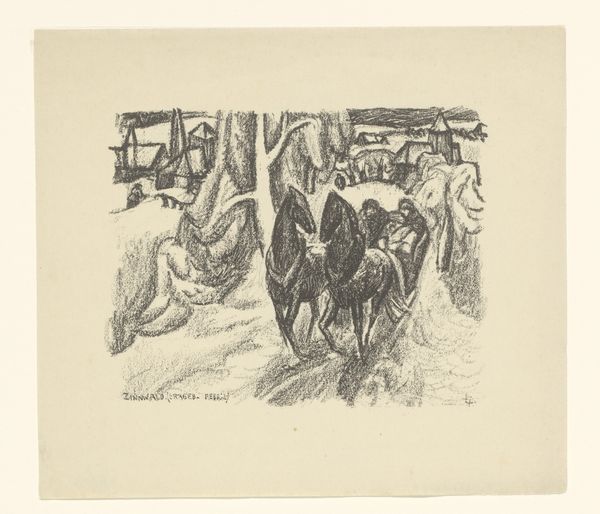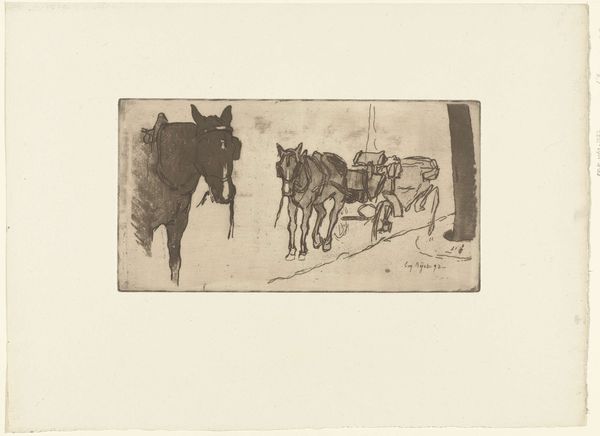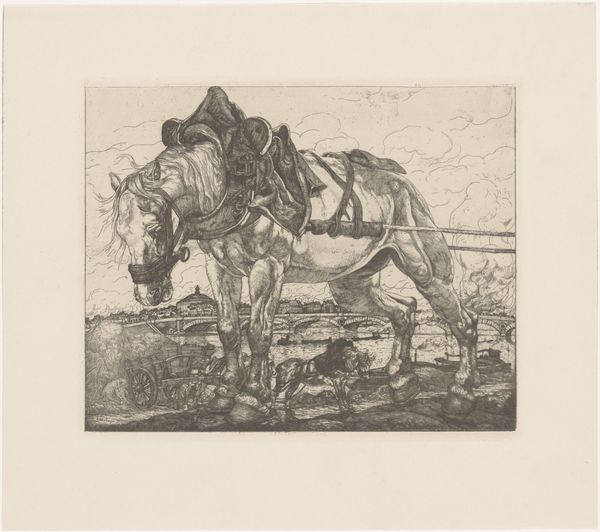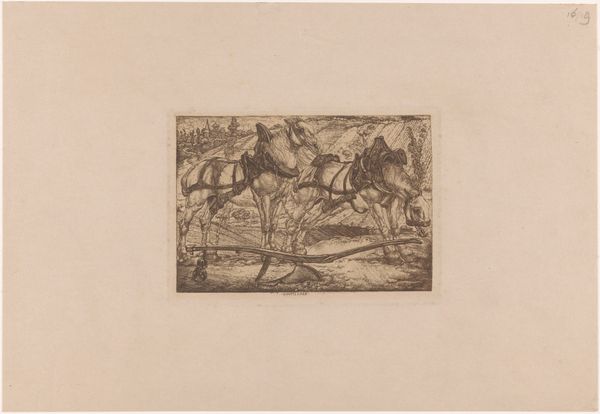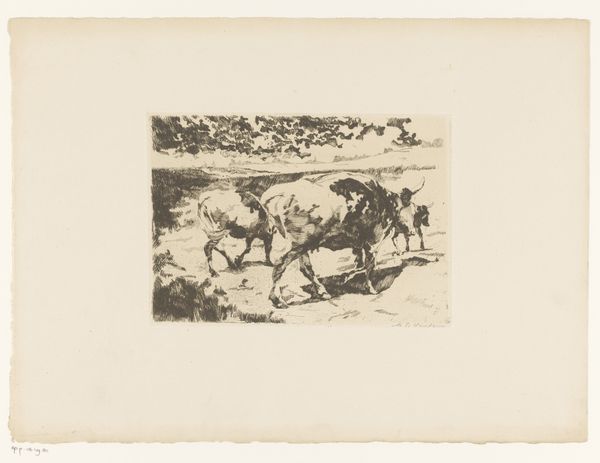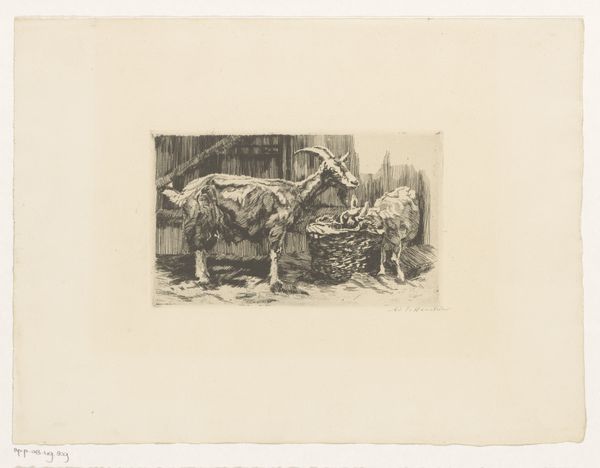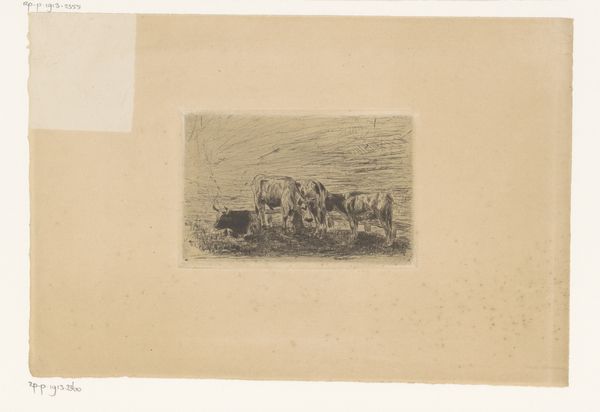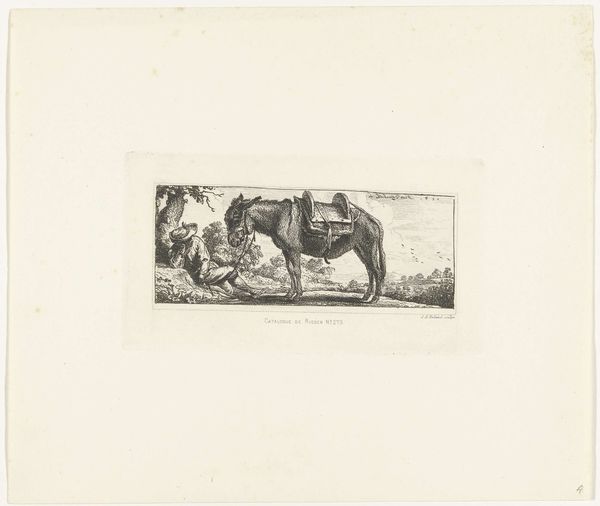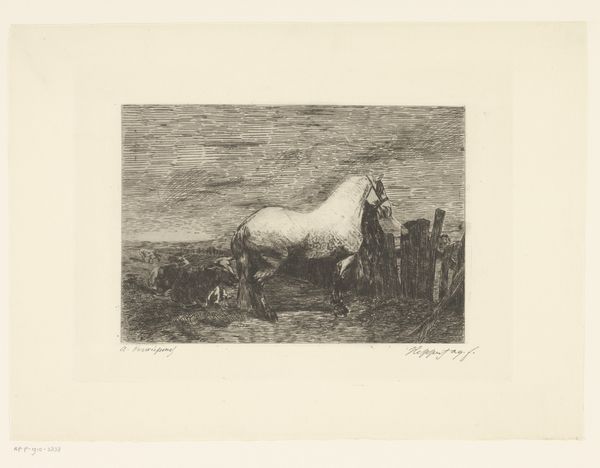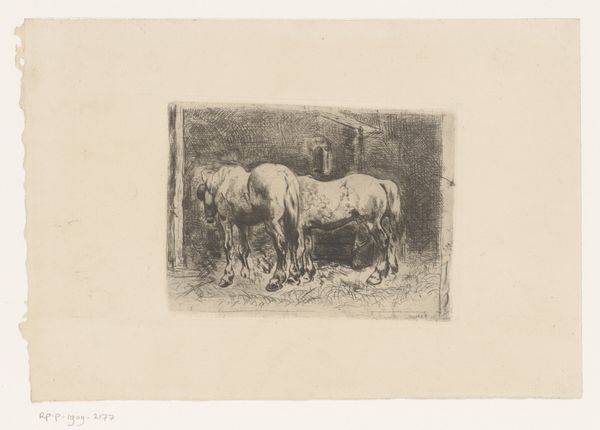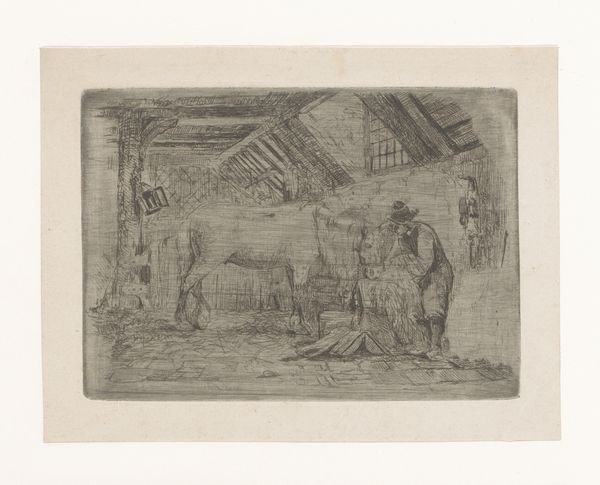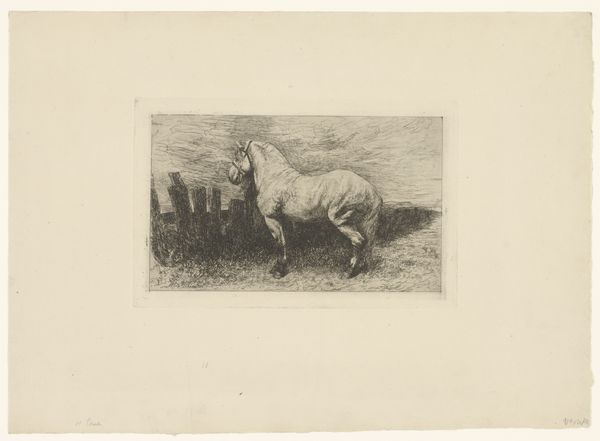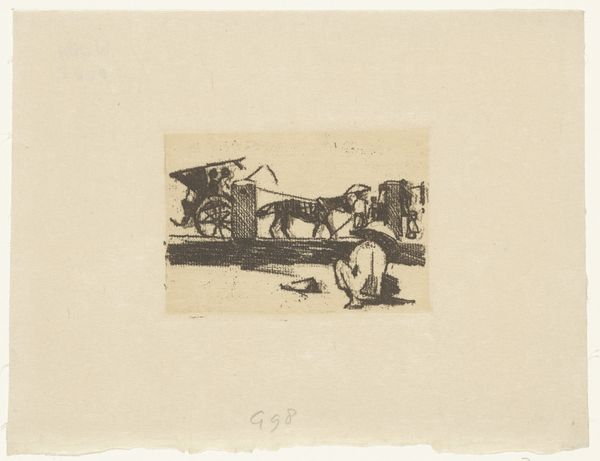
drawing, print, etching, pencil
#
drawing
#
dutch-golden-age
# print
#
etching
#
landscape
#
figuration
#
linocut print
#
pencil
#
line
#
genre-painting
Dimensions: height 170 mm, width 228 mm
Copyright: Rijks Museum: Open Domain
Editor: This is "Twee ossen voor een wagen," or "Two Oxen Before a Cart," created in 1928 by Willem van Konijnenburg, using etching and pencil. The tones are quite subdued, giving it a somewhat solemn feel. It really draws your eye to the heft of these animals... What stands out to you when you look at it? Curator: The most beautiful art, for me, often whispers rather than shouts. There's an undeniable stillness, isn't there? Konijnenburg is such a master of the subtle line; the print possesses an incredible depth and atmosphere. What do you feel it communicates about our relationship to the land, to labour? Editor: I think I see what you mean; it does seem to idealize simpler times, farming, working animals. But what about the lone figure? Does she play a role, or is she simply a witness? Curator: She is wonderfully ambiguous, isn't she? I find it interesting that the gaze is on the viewer; perhaps it is to engage the viewer in contemplation about this traditional Dutch rural setting. I wonder how aware Konijnenburg was of the rapidly changing world around him and his choices on display of such historical setting. Editor: So maybe it's a social commentary? A romanticized memory? It makes you wonder about his perspective. Curator: Precisely. And it invites *us* to wonder. All successful artworks contain ambiguities like these and they encourage reflection upon where we come from, where we're going... That’s where art becomes truly alive. Editor: I definitely agree, there’s a sense of a frozen moment, asking to be explored. It's amazing how much can be read from just a few simple lines and shades. Thank you!
Comments
No comments
Be the first to comment and join the conversation on the ultimate creative platform.
